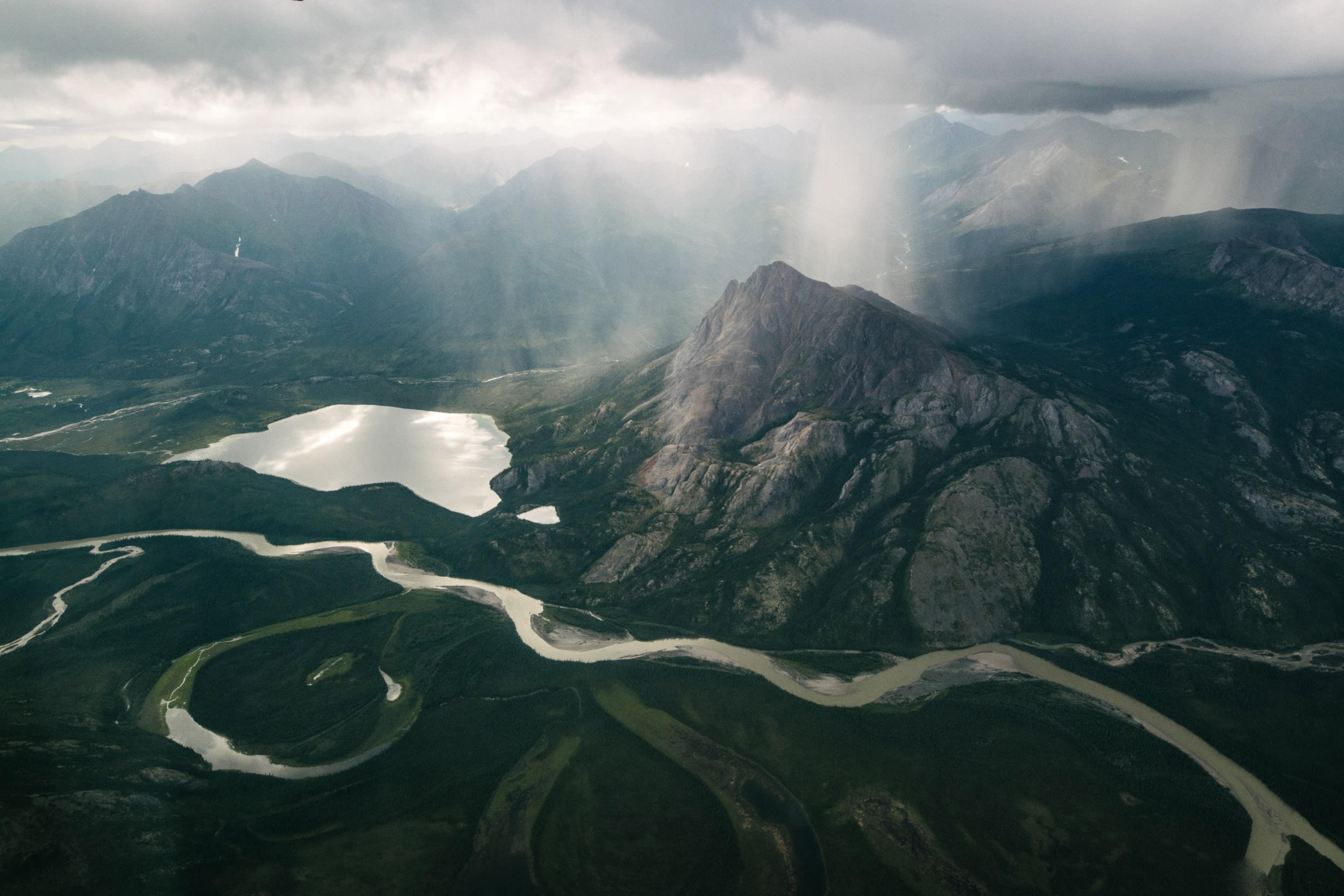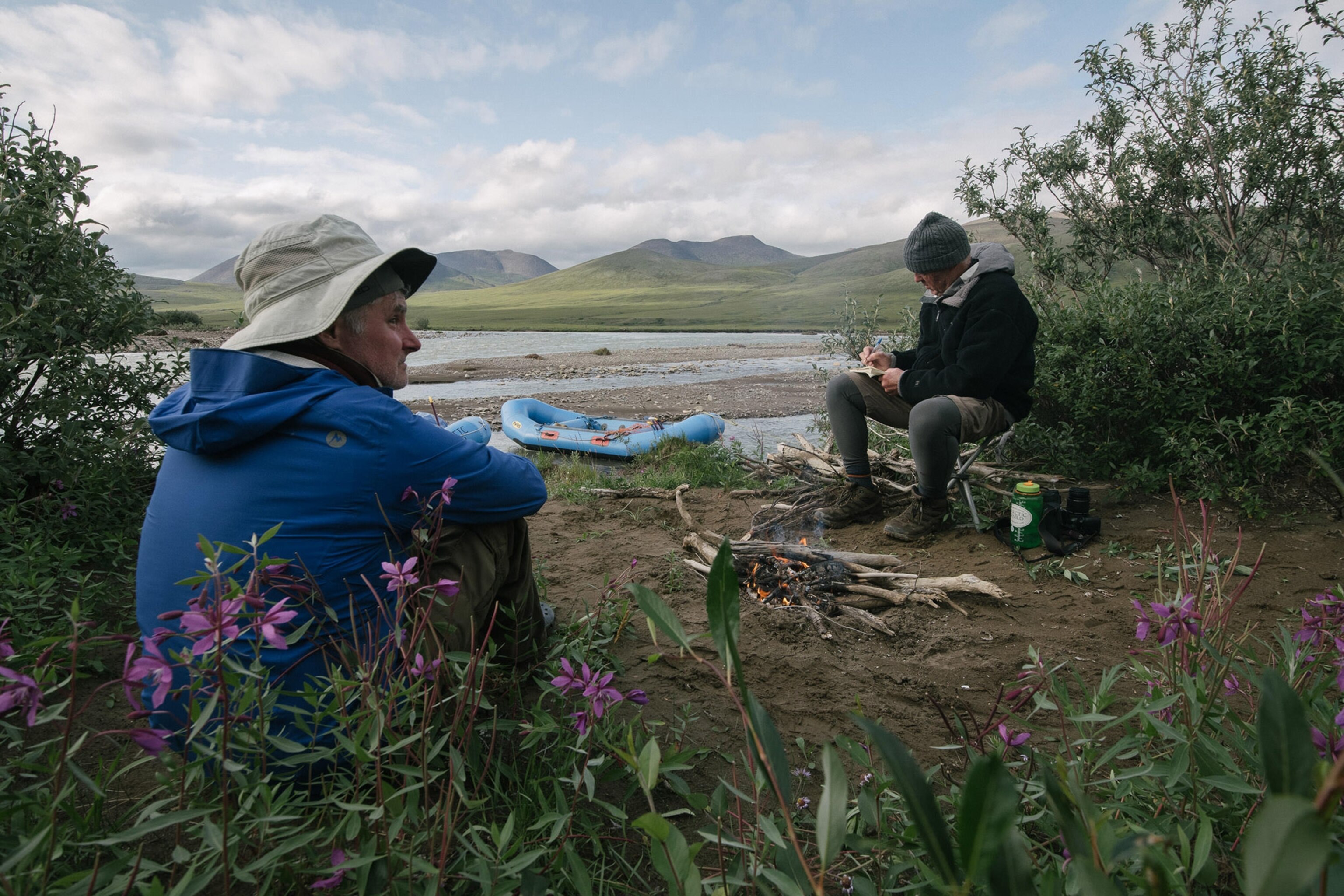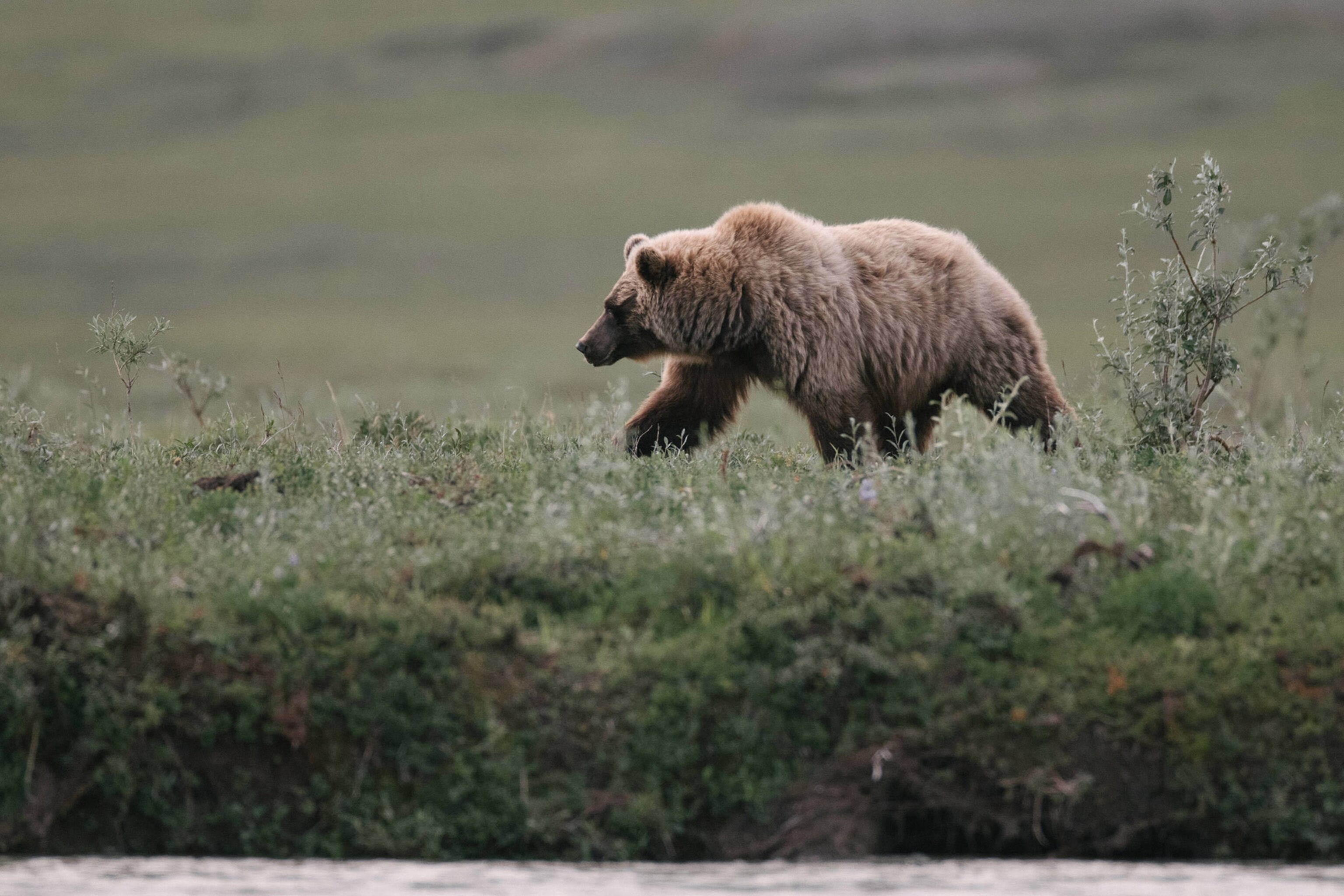
An ancient forest in Alaska loses environmental protections
The Tongass National Forest, the world’s largest intact temperate rainforest, sustains Indigenous communities. A rollback of federal protections puts more than half of it at risk.
A recent decision by the Trump Administration to strip protections from one of the world’s largest intact temperate rainforests could do irreparable harm both to the environment and to the communities that depend on it.
On October 29, the U.S. Forest Service opened more than nine million acres of Alaska’s Tongass National Forest to loggers. Now, these companies will be able to build roads through the rainforest and cut down thousand-year-old red and yellow cedar, Sitka spruce, and Western hemlock trees.
The move reverses the Roadless Rule Act, passed in 2001 with widespread support among conservationists and scientists. For years, the act protected the nearly 17 million-acre forest, an ecologically significant area that absorbs roughly 8 percent of pollution produced by the U.S., capturing more carbon offset than all the other U.S. forests combined.
Since the rule was enacted, every Alaska governor—Democrat and Republican—has lobbied Washington to reverse it. In August of 2019, President Trump announced plans to exempt the Tongass from the rule, and on October 28, 2020, he made good on his promise.
(Related: A new way to profit from ancient Alaskan forests—leave them standing.)
Conservationists argue that the rollback opens up the forest’s vulnerable woodlands to deforestation. Many others agree; of the more than 15,000 letters gathered by the U.S. Forest Service on the proposed rollback, 96 percent showed support for keeping the Roadless Rule intact.
For the Indigenous communities that call the forest home—it is the historical homeland of the Haida, Tsimshian, and Tlingit peoples—the rollback not only threatens the forest, it endangers their way of life and the wildlife habitats that make southeast Alaska so attractive to millions of tourists who visit each year, boosting the local economy.
“When I walk into the forest, it’s like walking into a beautiful cathedral,” says Joel Jackson, the tribal president of the Organized Village of Kake. “To us as [Tlingit] people, this forest is important. We hunt and gather here. Our traditional medicines are from here. The Tongass is our food pantry.”

Forest of memories
When Joel Jackson walks into the dense woodlands of the Tongass, he walks among giants. The ancient spruce and cedar trees tower like sentinels above him in this vast northwest rainforest where his ancestors once lived.
Jackson is a traditional Tlingit carver and artist in Kake, Alaska, a small town near the middle of the national forest, an ethereal swath of land rising from the natural waters of the Inside Passage.
The forest also supplies raw material and creative inspiration for the region’s artists. “We as artists are tied very closely to the Tongass,” Jackson explains. “We rely on those trees for carving. We’ve had so little snow the last number of winters, we’ve seen a big die off of yellow cedar. With logging, that will be a double whammy. They will go after yellow cedar and spruce because that’s where the money is.”

Kelly White, a 33-year-old master carver in the Tlingit community, is one of the younger generation of craftspeople torn between preservation and making way for new development—including resource extraction.
“There is definitely a controversy with these lands being protected. We want to preserve everything around us and then at the same time, there’s economic development,” White says. “There are also trees that you would love to harvest for carving projects.”
(Related: The old trees of the world are dying. What does this mean for climate change?)
Despite its name, the Roadless Rule doesn’t necessarily ban all road construction; since its inception, 57 projects, including roads for community interests such as hydroelectric development and infrastructure needs, have been approved by the U.S. Forest Service. In addition, locals can petition to harvest trees for carving needs.
“Since [the government] can approve projects like that, I don’t see the need for the rollback,” says Jackson, who was part of a delegation to Washington D.C. to fight for protection. “It’s no surprise to us [about the rollback] because we have a long history of dealing with the federal government coming in to check their box to say they talked to the tribes, and then they do what they’re going to do,” Jackson continues. “When they do projects [such as road construction], they don’t hire local labor, so our communities don’t benefit.”
What the artists do benefit from, however, are the tourist dollars from visitors who come to the Tongass for the views and stay to learn about the forest’s history and the people who live there.
“To us as [Tlingit] people, this forest is important. We hunt and gather here. Our traditional medicines are from here. The Tongass is our food pantry.”Joel Jackson, the tribal president of the Organized Village of Kake
“Our people knew not to abuse the land or pollute the waters we use,” says Ken Decker, a member of the Wolf clan of the Tsimshian People. “I think the Roadless Rule may concern the people trying to protect our trees and open it up to fortune logging. Most people know little about either [topic].”
Wildlife viewing and hiking along the nearly 700 miles of trails affords local conservationists a way to educate visitors about old-growth trees and their impact on the forest. Nearly half of those old-growth trees (which make up 4 percent of the forest) have already been cut down due to past logging.


(Related: Exploring the Arctic can be life-changing. Here’s how to do it responsibly.)
“The forest has always been integral to ways of life here,” says Patti Mackey, president and CEO of the Ketchikan Visitors Bureau. “As with many Indigenous people, the tribal groups of the Northwest Coast were in danger of losing their heritage and their identity, but they have valuable lessons to share.”
When reporting a National Geographic story on how a Native-owned corporation is being paid to leave some old-growth trees standing, photographer Joshua Cogan came to understand the complicated relationship between the Tongass and the logging industry.
“The few hundred jobs that are created by harvesting timber pale in comparison to the millions [of dollars] that tourism, carbon offsets, and commercial fishing bring when the forest is left alone,” Cogan says. “The first time I saw one of these giants fall, one of the old loggers, who saw how visibly shaken I was, said to me: ‘If you don’t feel something when you see that, something is wrong with you.’”

Tongass and tourism
Visitors have enjoyed the Tongass since long before President Theodore Roosevelt designated it a national forest in 1907. Despite being the world's largest temperate rainforest, the Tongass is primarily dominated by water, ice, wetlands, and rock.
The Mendenhall Glacier, the 32-mile Cross Admiralty Canoe Paddling Route, and the Admiralty Island National Monument, which the Tlingit people called “Kootznoowoo” (or the Fortress of the Bears), offer majestic views. Anglers gather here for a chance to see why southeast Alaska is called the salmon fishing capital of the world. Resorts are plentiful near Prince of Wales Island, a popular launching point for fishing tours.

(Related: Here’s why wild salmon remains king in the Pacific Northwest.)
Outdoor activities, including cold-water cruising, made the area around the forest a tourism hotspot. A 2018 Ketchikan tourism and economics report estimated nearly one million out-of-staters visited Ketchikan in summer 2017. Of those visitors, 95 percent arrived by cruise ship, and of the $223 million in direct spending, $187 million was spent by tourists. That kind of spending translates to 1,350 tourism sector jobs in Ketchikan.
But due to the novel coronavirus pandemic, Ketchikan’s cruise ship ports suffered a massive economic blow; in 2020, traffic went from 600 scheduled ports of call to zero. This dangerous drop highlights the region’s reliance on cruise tourism, a rich but troubling source of revenue that is often criticized for polluting air quality, contributing to overtourism, and leaving behind a wake of waste.

“Tourists would come by ship, but now there are no cruise ships to speak of because of COVID,” says Tlingit carver Nathan Jackson, a National Endowment for the Arts Fellow and one of the most well-known totem pole carvers in the world. “If a person really wants to support good art, then they should go to the good art stores and galleries in town that sell from artists who are trying to make a living.”
Travelers can visit now, and many tour operators have resumed operations, according to Mackey. Travelers are required to present a negative COVID test taken within 72 hours of landing in Alaska.
(Related: Learn more about the biggest fake Native American art conspiracy.)
Decker, owner of the Crazy Wolf Studio in Ketchikan and a master carver of original bentwood boxes, drums, and traditional dance paddles, says supporting Native people’s art is a powerful way to protect the Tongass. Sadly, he says, few visitors are willing to shell out the dollars for original creations.
“A lot of the touristy shops sell items that come from China and other places, but local galleries that buy from local artists are important,” he says. “The whole situation breaks your heart because people don’t want to pay for what the art is worth, for all the work that goes into the art.”
You May Also Like
Go Further
Animals
- Orangutan seen using plants to heal wound for first timeOrangutan seen using plants to heal wound for first time
- What La Palma's 'lava tubes' tell us about life on other planetsWhat La Palma's 'lava tubes' tell us about life on other planets
- This fungus turns cicadas into zombies who procreate—then dieThis fungus turns cicadas into zombies who procreate—then die
- How can we protect grizzlies from their biggest threat—trains?How can we protect grizzlies from their biggest threat—trains?
Environment
- What La Palma's 'lava tubes' tell us about life on other planetsWhat La Palma's 'lava tubes' tell us about life on other planets
- How fungi form ‘fairy rings’ and inspire superstitionsHow fungi form ‘fairy rings’ and inspire superstitions
- Your favorite foods may not taste the same in the future. Here's why.Your favorite foods may not taste the same in the future. Here's why.
- Are the Great Lakes the key to solving America’s emissions conundrum?Are the Great Lakes the key to solving America’s emissions conundrum?
- The world’s historic sites face climate change. Can Petra lead the way?The world’s historic sites face climate change. Can Petra lead the way?
History & Culture
- Meet the ruthless king who unified the Kingdom of Hawai'iMeet the ruthless king who unified the Kingdom of Hawai'i
- Hawaii's Lei Day is about so much more than flowersHawaii's Lei Day is about so much more than flowers
- When treasure hunters find artifacts, who gets to keep them?When treasure hunters find artifacts, who gets to keep them?
Science
- Why ovaries are so crucial to women’s health and longevityWhy ovaries are so crucial to women’s health and longevity
- Orangutan seen using plants to heal wound for first timeOrangutan seen using plants to heal wound for first time
Travel
- Why this unlikely UK destination should be on your radarWhy this unlikely UK destination should be on your radar
- A slow journey around the islands of southern VietnamA slow journey around the islands of southern Vietnam
- Is it possible to climb Mount Everest responsibly?Is it possible to climb Mount Everest responsibly?
- 5 of Uganda’s most magnificent national parks
- Paid Content
5 of Uganda’s most magnificent national parks




















